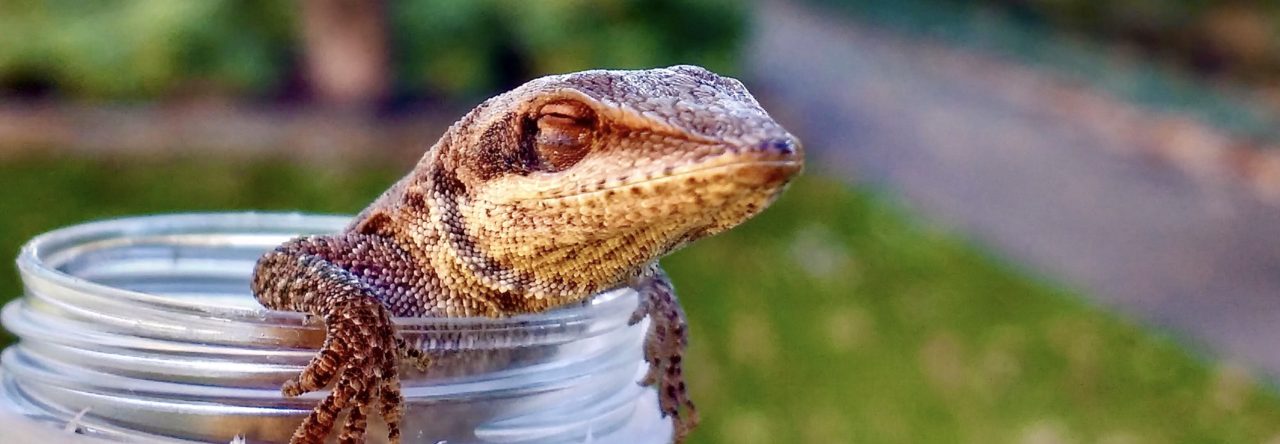
That’s right, you heard it here first. Read all about it, including a great sequence of photos and the story behind it, at Daffodil’s Photo Blog. We’ve mentioned this site before, as it’s the site of anole lover and author Karen Cusick, who wrote Lizards on the Fence. If you check out her blog, you’ll see that there are regular posts on the antics of her backyard greens and browns. Worth a visit!
Latest posts by Jonathan Losos (see all)
- Evolution in Real Time on Lizard Island - March 23, 2025
- Spider Snags Adult Anolis osa - March 22, 2025
- An Homage to the Green Anoles of New Orleans - March 21, 2025


Yoel Stuart
Very cool series of shots. It’s too bad the anole disappeared with its quarry over the fence as it would have been good to know if it actually was able to fully ingest the moth. I’m guessing no, given that the moth’s abdomen appears to be bigger than the lizards gape. Although I saw an anole grab a really big moth and it kept wiping the prey against a tree branch to help break it down to a manageable size (at least it broke off the wings that way). Thoughts, anyone?
KarenC
Thanks for commenting on my pictures! I don’t know what happened after the anole dragged the moth away over the fence. The moth was much too big to swallow whole, but if the anole was able to break off parts of it, it could have eaten at least some of it. I once saw a brown anole with a big cicada, and it managed to eat the entire cicada piece by piece as it carried it along the fence. This moth was much larger than the cicada though.
Rich Glor
What an amazing series of photos! The anole can’t possibly have eaten that moth though. The story at Daffodil’s Photo Blog ends with the moth being dragged out of view.
Ambika Kamath
I agree. The one time I’ve seen an anole (A. occulatus in this case) catch an insect (a large grasshopper/cricket) much larger than itself, it gave up trying to eat it soon after putting in the effort to catch it.
Thomas Sanger
Having eyes bigger than one’s stomach seems to be a common theme among anoles. This is a photo of A. cybotes that Michele Johnson took several years ago while working in the Dominican Republic.
Martha Munoz
Anolis cybotes is a repeat offender when it comes to eating prey too big for its mouth. Luke Mahler and Rich Glor document an A. cybotes trying (unsuccessfully) to eat an A. marron:
Mahler, D. L., and R. E. Glor. 2011. Natural History Note: Anolis cybotes cybotes (Hispaniolan Stout Anole) and Anolis marron (Jacmel Gracile Anole). Predation/Prey. Herpetological Review 42: 272-273.